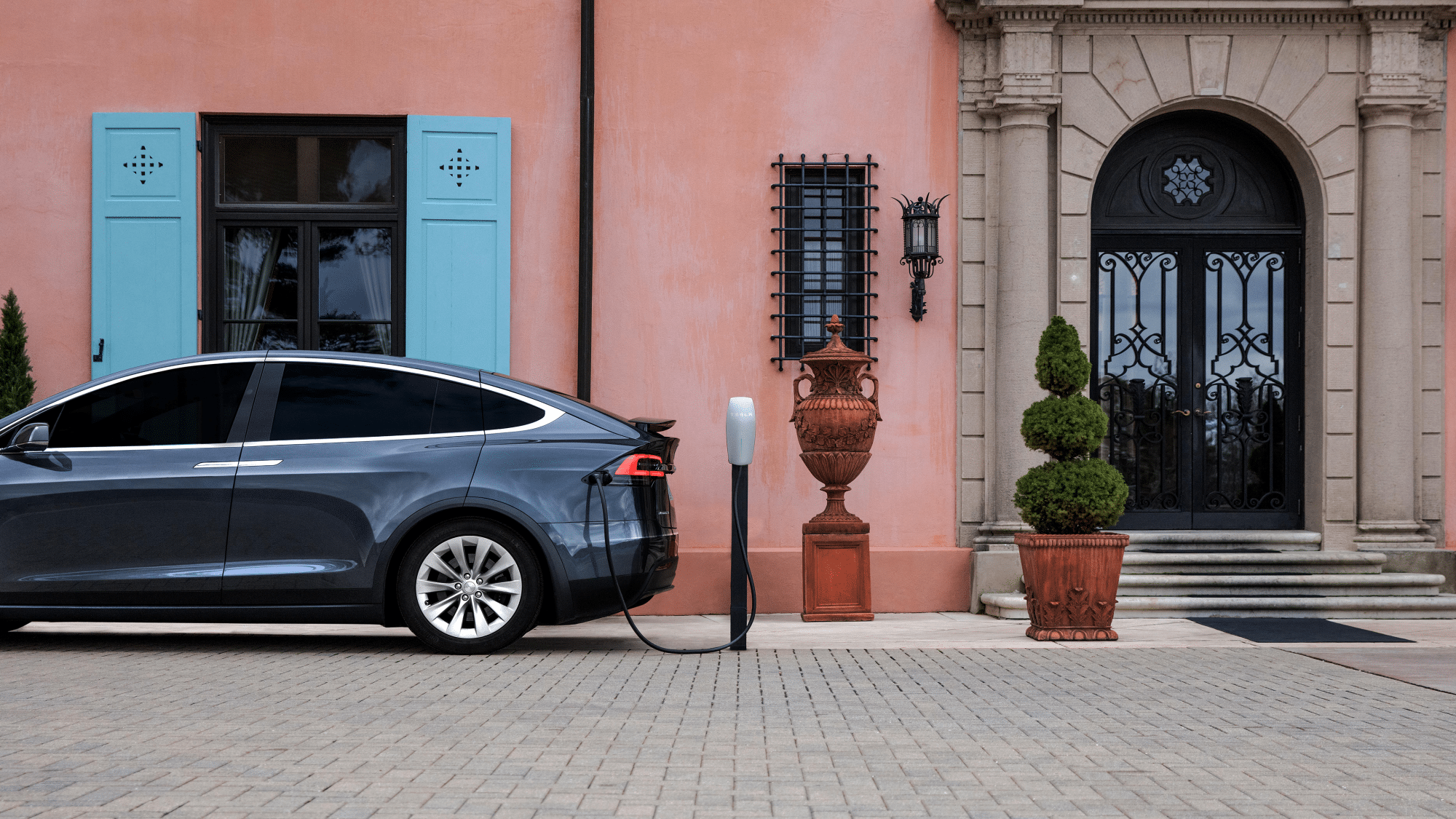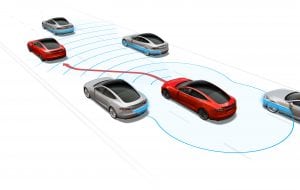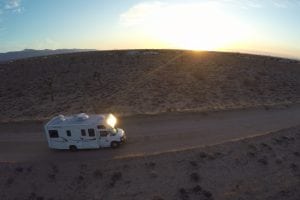Skift Take
The sharing economy hardly puts a dent in the fact that most American road trips occur with owned cars. But look out for brands adapting to electric vehicles before driverless cars change things completely.
 The Future of American Road Trips is a three-part deep dive examining why vacationers hit the road, where they spend their money, and how travel brands evolve alongside the vehicles that make road trips possible. Check out part one, part two, and part three.
The Future of American Road Trips is a three-part deep dive examining why vacationers hit the road, where they spend their money, and how travel brands evolve alongside the vehicles that make road trips possible. Check out part one, part two, and part three.
Road trips are evolving all around — rising in popularity, flooding national parks, attracting international visitors, and turning from a DIY low-budget project into a packaged luxury item. And yet, there’s one trend that could be more impactful than any other, once it actually goes mainstream: autonomous vehicles.
Self-driving cars could make the road trip unrecognizable. A road trip with no driver input, passengers completely distracted in the back playing a video game, or listening to a hologram John Muir guide everyone through Yosemite — that would be something.
“We over-romanticize the actual driving part of it,” said Devin Liddell of design firm Teague. “What we actually love about road trips is the social part of them, being connected to each other in that space … The task of driving is something that we’ve become liberated from, but we’re still in control. It’s not like a train, where we’re beholden to the train schedule.”
“Autonomous cars, particularly through the lens of a road trip, whether that road trip is for personal reasons or for business travel, it’s gonna take just as much market share away from the likes of hotels and Airbnb as from airlines,” said Liddell, who imagines future road trippers sleeping in the car and showering at a roadside hygiene station.
To be fair, many road trippers treasure the actual driving and having complete control over the vehicle. Over 70 percent of respondents to Enterprise’s 2018 Annual Weekend Getaway Survey said that the car ride is part of the trip to be enjoyed, and that a road trip offers more flexibility and spontaneity than other forms of transportation. Most of the high-spending clients of luxury tour operators All Roads North and Black Tomato opt to drive themselves, even though they can afford a private driver.
Liddell said we’re only five to seven years away from fully autonomous vehicles making it possible for a driverless road trip from Seattle to San Francisco, in which passengers are watching a movie, sleeping, and putting very little input into the car. He also noted that most road trips focus on freeways, which are much easier for autonomous vehicles than inner cities.
Makers of self-driving cars have a huge gap to overcome between semi-autonomous and fully autonomous technology. Even so, companies like Google, Waymo, Uber, General Motors, and Ford are racing to achieve the most comprehensive high-definition maps to make that leap.
Of semi-autonomous cars, Liddell said that some car makers and tech players actually think it’s too complex — a person driving in tandem with a machine — and they’d rather just skip to fully autonomous.
In the future, users might also pick and choose which autonomous vehicle to use for which type of outing. “We’re gonna go camping this weekend, so we’re using the autonomous Toyota 4Runner for that cause we’re gonna do a little off-roading, compared to we’re going to a wedding in wine country, so we’re gonna use the Lexus product for that,” said Liddell. “Future autonomous cars will feature some key superpower that actually comes from a brand other than the car maker.”
According to the 2018 Morning Consult study The Auto Industry Today and Tomorrow, 58 percent of respondents said they don’t trust self-driving cars now, but as technology evolves, they could trust them. Sixty percent of respondents said they didn’t know much or anything about autonomous vehicles, and 52 percent distrust them somewhat or completely.
Fears about safety peaked recently in March when a self-driving car from Uber killed a pedestrian in Arizona. Uber suspended its testing thereafter. Once self-driving car testing progresses and the vehicles become safer, more familiar, and affordable, road tripping will start to change permanently.
“Once you have direct experience, you’re actually very comfortable with it,” said Liddell.
Electric Cars Won’t Quite Be Revolutionary
Electric cars haven’t exactly revolutionized the road trip, as the driving experience remains pretty familiar. Sure, certain elements are new with an electric car — replacing a few minutes at the pump with time at a charging station, the latter starting around 30 minutes, sometimes lasting hours depending on the circumstances, during which the driver must find something to do.
In North America alone, Tesla has 14,000 individual chargers. In general they’re found along well-traveled highways and increasingly in urban areas. Thirty-six percent of these are located next to hotels and restaurants, which helps to pass the time.
Tesla is a household name for many Americans, but these cars haven’t really broken into the mainstream. The 15-year-old company, which still isn’t profitable, is hoping the $35,000 mass-market Model 3 sedan will take off, but that remains to be seen, especially as the maker struggles to produce enough of them.
Another issue with electric vehicles is range anxiety: worrying about whether the car will make it to the next charging station. This is crucial as so many road trippers are headed to national parks and rural areas out west, where charging stations are considerably less plentiful, although Tesla does offer a navigation tool to keep drivers on a feasible route for charging.
Range anxiety is not a concern for Vivianna Van Deerlin, a 54-year-old physician based in Morrestown, New Jersey, who owns three Teslas (Model S, Model 3, and Roadster), takes them up and down the East Coast, and regularly rents Teslas when she travels. However, her lack of range anxiety has a lot to do with considerable advance planning and sometimes restricting herself to hotels that have chargers on the property. Naturally, this precludes some spontaneity, a chief source of appeal for some road trippers, though technically, a Tesla can charge — very slowly — in a regular power outlet.
Travel Nevada in particular wants to assuage people’s range anxiety. Highway 95, which runs between Reno and Las Vegas, was declared an electric highway, meaning there are charging stations spaced properly along the way. Tesla also has a battery plant near Reno.
Theoretically, a smart road could charge an electric car as it drives, but this technology seems much further away than even the proliferation of self-driving cars.
RV Sales Are Up, But So Are Rentals and Shares
In the age of driverless and electric cars, sleek and tricked out with the latest streamlining tech, there’s one old standby that’s still meeting the needs of many road trippers: the recreational vehicle.
Class A motorhomes, among the largest RVs sleeping up to six and feeling like a small home, range from $103,000 to $670,000 according to Thor Industries, the world’s largest RV manufacturer. Class C motorhomes go down to $86,000 and a lightweight towable RV, which requires a vehicle to haul it, comes in at $15,000 to $35,000.
RV sales are up at Thor, which saw first half net sales of $4.2 billion, up 27.5 percent, according to the company’s fiscal 2018 financial results. President and CEO Bob Martin told CNBC that he attributed growth to Gen X and Gen Y, and the company is targeting millennials next.
Among campers whose primary accommodation is an RV, 44 percent don’t own the RV they use most, according to Kampgrounds of America’s 2018 North American Camping Report. One-fourth of this group says they borrow and one-fifth rents from a traditional RV rental company. Millennials now comprise 37 percent of RV vacationers — 22 percent of millennials say an RV is their primary type of camping accommodation, but half of these don’t own the rig they use.
Travel Nevada has actively marketed to road trippers with RV rental company Jucy, which specializes in smaller, manageable camper vans that appeal to first-timers and international visitors who might be intimidated by a giant Class A motorhome.
Indigenous tourism professionals are also invested in serving travelers with RVs, especially in the rural west. There are almost 100 Native-owned RV parks in the U.S. according to the American Indian Alaska Native Tourism Association, which is creating new promotions around this.
“A lot of European people do rent RVs and explore the U.S. that way, because their holidays are so long,” said Camille Ferguson, executive director of the association. “You have the average visitor to Indian Country spending 23 days.” Ferguson herself owns a 31-foot Greyhawk Class C motorhome.
There’s plenty of room for the sharing economy in this new generation of RVers. Over half of non-RV owners said they would consider renting an RV from a peer-to-peer service, millennials and Gen Xers being most receptive to this, according to Kampgrounds of America’s 2018 North American Camping Report.

An airstream in Santa Cruz, California. Peer-to-peer RV sharing is gaining traction. Photo by Outdoorsy.
One such peer-to-peer service, Outdoorsy, founded in 2015, reported that 40 percent of its user base is under 40. The company also reported growing revenue by 465 percent in 2017 alone.
“The recreational vehicles that younger people rent on our site are usually very familiar to drive,” said Jeff Cavins, co-founder and CEO of Outdoorsy. “They’re usually camper vans, Westfalias, Mercedes Sprinter vans.”
According to Cavins, there are about 18 million RVs sitting idle in the United States. Twelve percent of American households owns an RV but may use it less than one week a year. Outdoorsy’s users range from 20 to 75 years of age, and unlike with Airbnb, the key exchange on Outdoorsy must happen in person, which fosters a tight-knit community. “We’ve seen marriage proposals, we’ve seen dating, we’ve seen families become best friends,” said Cavins.
However, problems do arise. Outdoorsy once had to tow an RV from White Horse in Canada to Seattle because of a major mechanical failure, costing $15,000 and 20 hours in transit.
Autonomous driving is one solution to people’s fears of operating a big rig, according to Devin Liddell of Teague. Older RVers especially have something to gain from this technology. “There’s a social isolation that becomes very pronounced when older people lose the ability to move around on their own, but that will go away with autonomous vehicles,” said Liddell.
The Sharing Economy Barely Makes a Dent
The sharing economy could seriously impact how an American acquires a car for a road trip — but it hasn’t, so far.
According to the 2018 Morning Consult study The Auto Industry Today and Tomorrow, 36 percent of respondents were unlikely to purchase a car because they didn’t have a practical reason to own one. The sharing economy could eclipse car ownership in the future, according to Teague — the predictable, lower costs of sharing or renting are attractive. Car rental online sales in the U.S. in 2017 reached $15.2 billion, up from $11.5 billion in 2012, according to Euromonitor’s Car Rental in the U.S. report. AAA reported that at $59, the average daily cost of a car rental on Memorial Day 2018 is the lowest rate in the past four years.
And yet, 76 percent of domestic trips in 2016 relied on the traveler’s own vehicle as the primary mode of transportation, according to the U.S. Travel Association’s 2017 Domestic Travel Market Report. Only 5 percent of trips in 2016 relied on rental cars as the primary mode of transportation, and 11 percent of trips used rental cars for some portion of the trip.
Ridesharing’s popularity forced Hertz and Avis to reduce the size of their fleets. Carsharing isn’t so popular either — much like the difference between an Airbnb and a hotel, Turo doesn’t offer as much support or reliability as a traditional car rental company.
“If you go into a shared car and you see someone’s Starbucks or their burger wrapper or anything that’s left behind, it immediately shatters the illusion that it was just for you,” said Liddell.
Road Trips Are Inseparable From the American Identity
Road trips are so integral to American life that they may never fall out of favor. So long as the country is 3,000 miles wide, full of rural areas, with friends and families so spread out, road trips will endure.
They will merely evolve from a Model T puttering into Yosemite to an SUV gas-guzzling into Daytona Beach, to an electric vehicle charging next to a 21c hotel, to an autonomous vehicle reacting to voice commands.
A great barometer for what’s happening in America today, road trips reflect cultural identities and desires for freedom, but also political fights, recession belt-tightening, frustrations with urban sprawl, and fears of the “other” as racial profiling and the chasm between the coast and the interior persist.
Whether they reflect the best or worst of contemporary America, road trips are here to stay. As for the future, Allyson Hobbs, a history professor at Stanford University, offered an idea:
“If people of all backgrounds could go on the road and travel freely — what an incredible society that would represent.”
The Daily Newsletter
Our daily coverage of the global travel industry. Written by editors and analysts from across Skift’s brands.
Have a confidential tip for Skift? Get in touch
Tags: car rentals, carsharing, driverless cars, electric cars, ridesharing, RVs, teague, tesla
Photo credit: A Tesla at a hotel charging station. Electric vehicles are changing the anatomy of the road trip, but driverless cars will be even more impactful. Tesla


